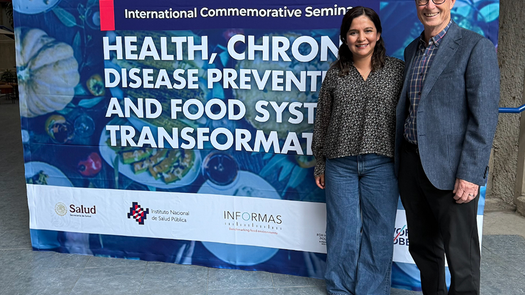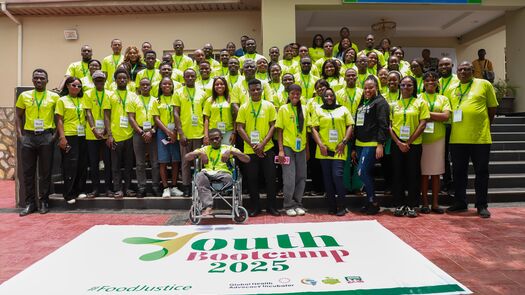November 25, 2025

Research for this report was conducted between 2022 and 2023 as part of the project "Equity and Health in Food Systems," conducted by FIAN Brazil with the support of GHAI. We sat down with Mariana Santarelli, member of the organization’s Collegiate Coordination and Leader of the School Meals Watch, to discuss the significance of this report and how it should inform food and nutrition movements in the country going forward. Here are some excerpts from that interview.
Why was a report needed like this in Brazil?
MS: In Brazil, we still talk very little about inequalities in food systems. As an organization that works on the human right to food and nutrition, we felt it was our responsibility to stimulate this conversation as it relates to existing anti-racist, decolonial and feminist movements. National food insecurity surveys have already highlighted severe inequalities among class, race and gender lines. Our study is unique because it analyzes how various organizations and actors related to the field of food are addressing and discussing these issues.
The first part is a qualitative narrative analysis to understand how the discussion of food systems, race, gender and class was or was not appearing in some public texts from organizations in different sectors of society. This includes associations like the Brazilian Industry Association and the Brazilian Agriculture Association, professional nutrition organizations, as well as academic studies. In our report, we found that there is a severe lack of meaningful discourse on the intersection of race, class and gender and hunger and malnutrition.
The other part of our study focused on indicators. Many studies cover food inequality in Brazil, including the last major study conducted by the Brazilian Network for Research on Food and Nutritional Security, which showed hunger (severe insecurity) figures during the COVID-19 pandemic along gender and race lines. The addition of our study is that we worked with quantitative data to show how societal inequalities in Brazil manifest when intersected with food insecurity data.
This report is an attempt to bring more indicators to the discussion and to show how narratives are or are not structuring themselves to address this issue to properly inform public policy.
Were you surprised by any of the findings?
MS: Even if we are all aware of existing inequalities, the findings still surprised me. For example, black children are much more likely to experience food insecurity. Curiously, most people are eating poorly across class lines, showing that income isn’t necessarily influencing what people buy at the supermarket.
I was also surprised by the lack of racial discourse from the National Federation of Nutritionists and the Brazilian Nutrition Association. These are professional associations that speak on the human right to food, but hardly ever on racial and other structural issues. On the other hand, when we look at the narratives coming from social movements in rural areas, which are well organized here in Brazil, we see they have a deep understanding of food systems and speak about its inequity, the concentration of land in the hands of a few people and the plight of family farmers and indigenous communities.
How will the report’s findings inform your work going forward?
MS: The report provides a lens to inform our work advocating for public policies. This perspective helps us formulate how we should advocate for school meals policies, food procurement programs and income transfer programs, among others. Our challenge as an institution is to engage in dialogues with our partners to look at public policies, like front-of-package nutritional labeling for example and discuss how inequalities intersect with the discussion around it.
How can this report help inform the wider food justice community in Brazil and beyond?
MS: Our purpose in creating this report is both to contribute information to this field, and, above all, to sound the alarm. Without a structural analysis, it's simple to just say the people who suffer the most from hunger are black, they are women, they are households led by women, but we don't explore why. The relevant actors don’t examine why these people are suffering from hunger the most, they just give a snapshot of the situation without looking into the underlying causes behind it. There is also a lack of attention to the strategies carried out by women and indigenous people to overcome hunger and malnutrition, and how they can inform public policies.
We, in the food and nutrition movement, are still paying too little attention to details in a country deeply marked by inequalities, violence and injustices. In writing this report, we became more involved with activists and groups already doing it. This started to mobilize a network, especially of black women who have begun to research this both in academia and in civil society organizations, and we really want them to gain prominence as spokespersons. Groups like the Women's Network for Food Security and Nutrition and Culinafro are doing great work to advocate for the food and nutrition needs of Black Brazilians and expose the structural issues behind the inequities they face.
Globally, documents like these bring forward important points on how to transition to fair, healthy and sustainable food systems. It informs how we can think about justice in other fields, especially when concerning environments marked by conflicts, social and racial inequalities, unbalanced power relations and human rights violations.



